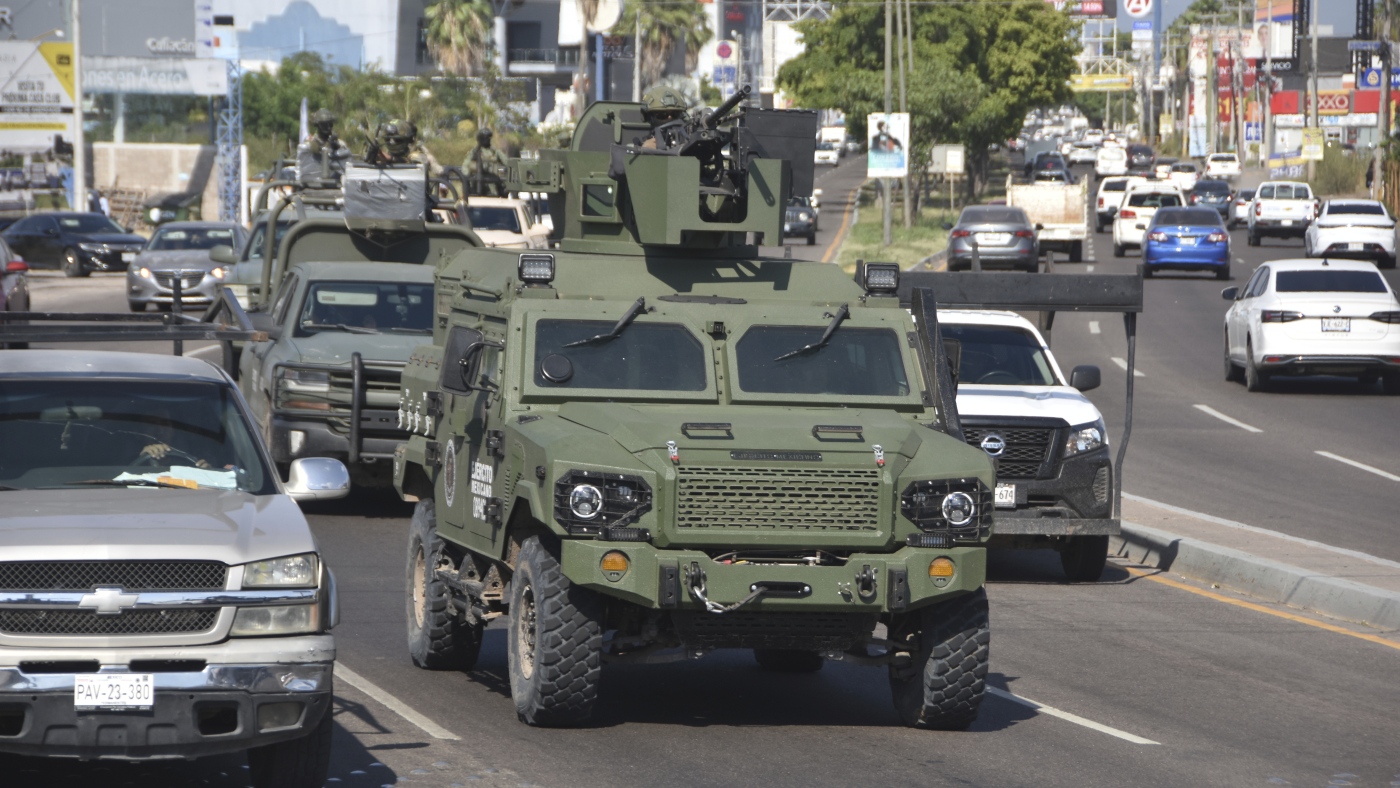The recent surge of violence in Sinaloa, Mexico, has brought the country’s ongoing cartel wars into stark relief. In a single day, approximately 20 individuals were killed, including four whose decapitated bodies were gruesomely displayed hanging from a bridge in Culiacán, the state capital. This escalation underscores the brutal nature of the conflict and the challenges faced by local authorities in maintaining order. To fully grasp the significance of these events, it is essential to examine the background, dynamics, and broader implications of the violence.
The Sinaloa Cartel: A History of Power and Fragmentation
The Sinaloa Cartel, once led by Joaquín “El Chapo” Guzmán, has long been one of the most powerful criminal organizations in the world. The cartel controls key drug trafficking routes, particularly those supplying fentanyl and methamphetamines to the United States. However, since El Chapo’s arrest and extradition, the organization has fractured, with rival factions vying for control over lucrative territories and trafficking corridors. This internal power struggle has led to violent clashes, turning cities like Culiacán into battlegrounds.
The recent surge in violence is a direct result of this leadership vacuum. With no clear successor to El Chapo, factions within the cartel have resorted to brutal tactics to assert dominance. Public displays of violence, such as the hanging of decapitated bodies, serve as both a warning to rival groups and a grim reminder of the cartel’s control. These acts of brutality are designed to instill fear and undermine the authority of local law enforcement.
The Immediate Incident: A Day of Bloodshed in Culiacán
The latest wave of violence in Cinaloa unfolded over the course of a single day, with gunfights, killings, and public displays of brutality shocking the community. The discovery of four decapitated bodies hanging from a bridge sent shockwaves through Culiacán, highlighting the escalating conflict. Authorities reported a total of 20 deaths linked to the violence, a staggering figure that underscores the intensity of the cartel war.
Such incidents disrupt the social fabric of the community, paralyzing daily life and undermining the sense of security among residents. The public display of violence is particularly alarming, as it signals a new level of brutality in the conflict. The cartel’s ability to carry out such acts with impunity reflects the weakness of local authorities and the depth of the cartel’s influence.
Root Causes: Beyond Rivalry
The surge in violence in Sinaloa is driven by a complex interplay of factors, including a leadership vacuum, economic incentives, weak state response, and social impacts. The arrest and imprisonment of key cartel bosses have left a power vacuum, prompting factional disputes to fill the gap. Control over drug routes means control over vast profits, and with increasing demand, every corridor is fiercely contested.
Law enforcement efforts are often compromised by corruption, inadequate resources, and the overwhelming power wielded by cartels. The social impacts of the violence are profound, with fear restricting mobility, economic activity, and basic freedoms. Communities bear the brunt of the violence, with trauma and displacement exacerbating social instability.
Consequences for Sinaloa and Beyond
The spike in violent incidents in Sinaloa has significant consequences, both locally and nationally. The humanitarian crisis resulting from the violence affects families and communities directly, exacerbating social instability. Economic disruption is another major concern, as fear and insecurity hinder businesses, deter investment, and challenge local governance.
The security dilemma is particularly acute, as police and military deployments often heighten tensions without addressing root causes. Collateral damage and abuses by law enforcement further undermine public trust. The spillover effects of the violence can spread to neighboring regions, aggravating national security challenges. Culiacán, once relatively stable compared to other Mexican cities, is increasingly seen as a danger zone, alarming both citizens and policymakers.
Challenges in Addressing the Violence
Efforts to curb cartel violence in Sinaloa face multifaceted obstacles. The cartel’s deep roots in local economies and politics make eradication or reform exceedingly difficult. Corruption and impunity within law enforcement agencies undermine the rule of law, while poverty, lack of opportunities, and weak social infrastructure foster environments where cartels can recruit easily.
The persistent market for narcotics outside Mexico fuels cartel revenues and incentives for violent disputes. Without a comprehensive approach that addresses these intertwined factors, violence is likely to persist or worsen. The recent surge in violence highlights the urgent need for a multi-dimensional strategy that prioritizes justice, development, and community resilience.
Pathways Forward: Rethinking Strategy
Addressing the surge in violence requires a shift from reactive security measures to a multi-dimensional strategy. Enhancing law enforcement integrity and capacity is crucial, as is reforming police, judiciary, and military forces to operate with professionalism and accountability. Community engagement is another key component, empowering local populations through social programs that provide alternatives to cartel influence.
Economic development is essential to creating legitimate economic opportunities and reducing dependence on illicit economies. Regional and international cooperation is also necessary to disrupt trafficking networks and reduce drug demand. Intelligence-driven operations targeting leadership hierarchies and cutting cartel financing streams can help dismantle the organization from within.
Conclusion: The Heavy Cost of Cartel Fragmentation
The recent surge of cartel violence in Sinaloa, marked by the brutal killings of 20 individuals and the chilling spectacle of decapitated bodies displayed publicly, lays bare the vicious internal conflict tearing apart one of Mexico’s most notorious criminal organizations. This bloody struggle for control not only devastates communities but also challenges the fabric of law, governance, and security in the region.
Confronting this crisis demands more than forceful repression; it necessitates a nuanced understanding of the political, social, and economic dynamics that sustain cartel power. Only through a well-rounded approach that prioritizes justice, development, and community resilience can Sinaloa hope to stem the tide of violence and restore a sense of peace and normalcy to its people. The cost of failure is measured not just in bodies but in lost hope and fractured futures.

